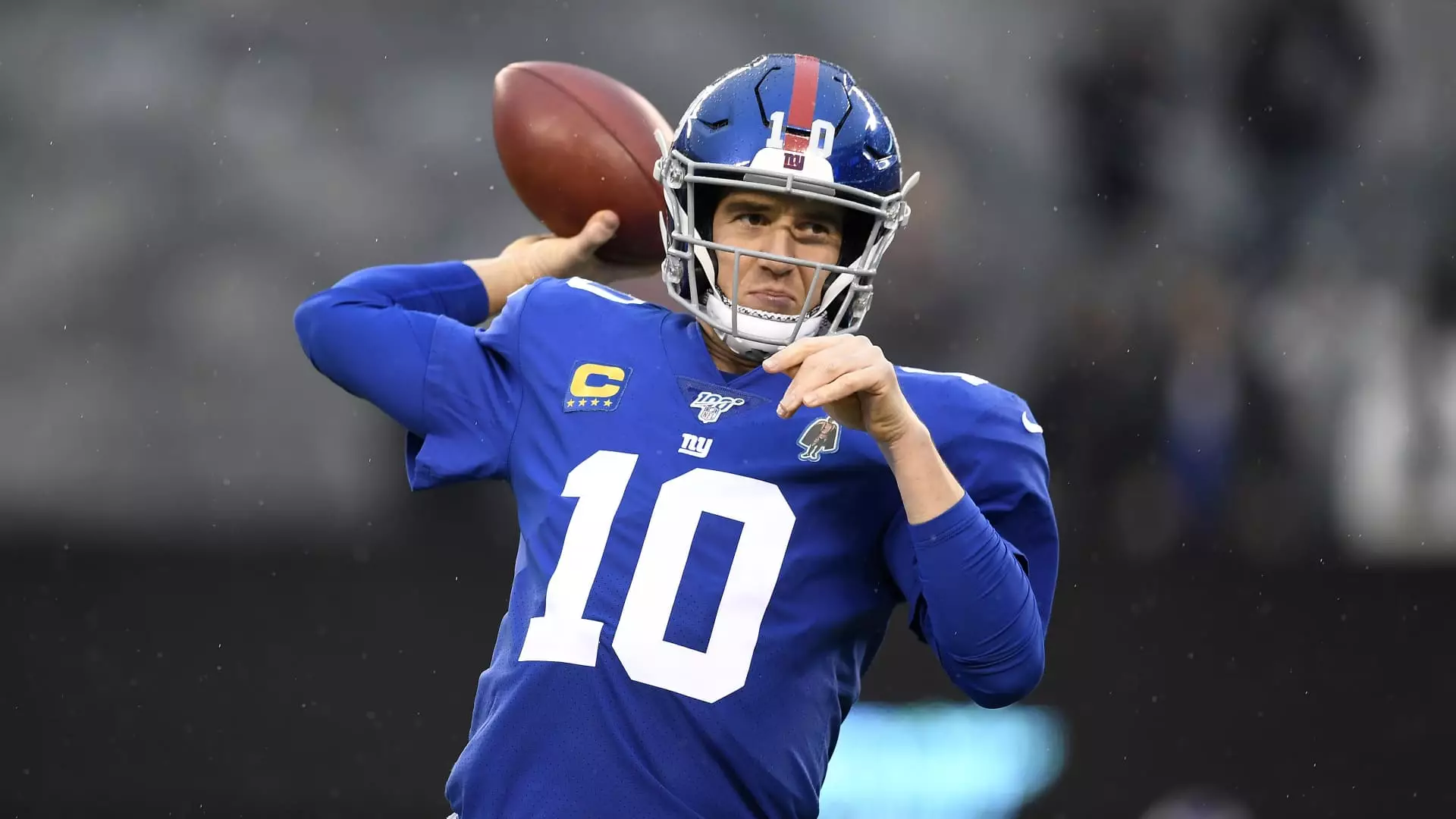The recent declaration by Eli Manning that he can no longer afford to buy a stake in his beloved New York Giants underscores a troubling reality: the valuation bubble currently inflating NFL franchise worth is unsustainable and, frankly, unjustifiable. While NFL revenues have skyrocketed, driven by lucrative TV deals and expanding fan engagement, the valuations of teams have outstripped this growth by staggering margins. Manning’s candid acknowledgment of being “priced out” reflects a broader phenomenon that warrants skepticism. When even former legends see the numbers as prohibitive, it highlights a disconnection between real economic value and the inflated figures that dominate headlines.
The valuation of the Giants at nearly $8 billion by CNBC is just one example. Yet in recent months, teams like the Philadelphia Eagles and San Francisco 49ers have sold minority stakes at valuations hundreds of millions to over a billion higher than prior estimates—despite no fundamental change in their revenue streams or market fundamentals. The Lakers, a franchise with a much older legacy and different revenue calculus, mooted a $10 billion valuation. These soaring numbers aren’t driven solely by actual profitability but often by speculative investor enthusiasm, entrenched insider manipulation, and the perception that sports teams are “must-have” assets for accumulating wealth and influence.
This pattern hints at a dangerous economic distortion. Market values for NFL teams now resemble tech company valuations during the late 1990s dot-com bubble—detached from the core business operations and more reflective of speculative betting than sustainable growth. Manning’s withdrawal from the potential purchase signals that even high-net-worth individuals are increasingly finding these valuations absurd and unattainable, revealing that the market’s upward spiral may be approaching its limits.
The Political & Economic Implications of Skyrocketing Franchise Valuations
From a broader economic lens, these inflated valuations distort perceptions of real value, leading to inefficient capital allocation. Wealthy investors, eager to leverage sports franchises as status symbols or as strategic assets, are fueling an environment where the true economic utility of a franchise is secondary to its perceived investment and social prestige. This process diminishes the integrity of the franchise market, turning stadiums and team ownership into symbols of wealth signaling rather than genuine enterprises rooted in community and enterprise.
Politically, the surge in team valuations feeds into a narrative that sports franchises are untouchable, privatized treasures—beyond regulation or fair taxation. If franchise prices are artificially high, it becomes increasingly difficult for smaller investors, community-led initiatives, or even emerging entrepreneurs to participate meaningfully in this arena. Elite ownership becomes a fortress of the super-rich, widening the gap between the affluent and the rest of society.
Furthermore, Manning’s decision not to pursue ownership due to potential conflicts of interest and professional constraints illustrates the practical challenges that arise when this inflated market becomes a playground for the ultra-wealthy. The intertwining of sports, media, and private equity creates a complex web where maintaining independence and integrity becomes progressively more challenging. His stance exposes the inherent contradiction in the current system—where athletes, broadcasters, and entrepreneurs alike are forced to navigate a valuation-driven minefield that prioritizes market perception over genuine operational value.
Market Distortions and the Future of Sports Franchise Ownership
The recent shifts in ownership rules—such as allowing private equity firms to hold up to 10% stakes—exacerbate these distortions. The entry of institutional investors further inflates valuations, creating an environment where the primary driver of franchise worth is speculation, not fundamentals. When investors like Julia Koch or Marc Lasry vie for stakes in iconic teams, it underscores an emerging trend: sports assets are increasingly viewed as financial instruments rather than community assets.
Manning’s outspoken skepticism about the future value of such investments hints at a reckoning on the horizon. If current trends persist, the bubble will inevitably burst, leading to a value correction that could destabilize the ice-thin financial structures supporting these franchises. For now, meanwhile, the market remains enthralled by the illusion of limitless growth, blinding many to the risk that the entire edifice could come crashing down when the fundamentals shift—prompting a painful re-evaluation among owners, investors, and fans alike.


Leave a Reply